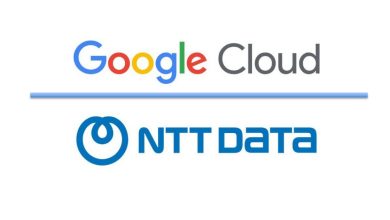Data and What it Takes to Level Up Logistics to New Frontiers

By: Hemanta Banerjee, Vice President of Public Cloud Data Services, Rackspace Technology
 On point and on time, if anything sums up what Malaysian consumers expect from shipping, it would be these two. Mordor Intelligence attributes this to tech-savvy consumers at home with e-commerce. Not only that, the Communications and Multimedia Ministry has referred to e-commerce – which it says is on track to be worth RM1.65 trillion by 2025 – as the heart of the nation’s economy. Delays or bottlenecks just won’t do. Data transformation is key to this transformation, but organisations often make the mistake of treating it as a big, one-time undertaking.
On point and on time, if anything sums up what Malaysian consumers expect from shipping, it would be these two. Mordor Intelligence attributes this to tech-savvy consumers at home with e-commerce. Not only that, the Communications and Multimedia Ministry has referred to e-commerce – which it says is on track to be worth RM1.65 trillion by 2025 – as the heart of the nation’s economy. Delays or bottlenecks just won’t do. Data transformation is key to this transformation, but organisations often make the mistake of treating it as a big, one-time undertaking.
The case for an incremental, inclusive approach
As with most things, levelling up the organisation’s data estate needs to take place in stages. As you get more information, you get better at identifying what will maximise benefits and what won’t. That positions the organisation to make better choices and drives better decision-making in the future.
Another common mistake is thinking that IT alone is responsible for data modernisation. This stems from a fundamental misunderstanding of what it means to modernise data infrastructure. While IT can provide the tools, technologies and skill sets, stakeholders on the business side must also take ownership. Ultimately, it is the latter who possess a deep understanding of business processes and its bottlenecks – and they are the ones who can identify how insight gathering and analytics will maximise business outcomes. IT can bring the data to one place and make it available, but business decisions still need to be made, and it makes no sense if business stakeholders don’t feel a sense of proprietorship.
Navigating bumps in the road
If recent years have proven anything, it’s that digital transformation without insights into the business processes won’t lead to more streamlined supply chains. Exacerbating this is the issue of businesses badly needing to modernise their legacy data platform, especially as some of this data has been accumulated over decades.
The first port of call is to ask what is needed to digitise data between vessels and supply chains. Because this differs for different stakeholders, thus it’s important to think about how data modernisation be achieved across the entirety of the supply chain. It’s a lot more than just installing a wireless access point or running a cable from point-to-point. No, instead, organisations need the tools and the foundations to synchronise data from all clients. After all, the typical supply chain will require the business to warehouse all products ordered from e-commerce platforms. Moreover, privacy will be a major sticking point, as integrating APIs from different systems for different clients will pose a host of challenges for businesses that want to streamline logistics to be more resilient.
Tapping AI’s potential
There’s no escaping Artificial Intelligence (AI) today. This technology that once seemed only possible in sci-fi is now upending many of the established ways of doing things. This is no less true of logistics. IDC predicts that for 60 percent of the Asia Pacific’s 2000 largest companies, generative AI will support core supply chain processes by 2026. The market intelligence firm further asserts that this will reshape supply chain design to be more dynamic, estimating it to reduce operating costs by 5 percent.
Expectations are that this revolution will bring about more synchronised, responsive, and cost-effective supply chains. However, while it is inevitable that AI will feature prominently in the years ahead, the hoped-for outcomes are not. That hinges on an understanding which use cases have the ROI and this can happen only if organisations are actively capturing the signals coming from the business processes and analyzing them to understand the bottlenecks.
Moreover, AI is not some silver bullet; it is no substitute for human judgement and expertise by any means. Sure, AI helps reduce errors and makes life a lot easier, but there is no replacement for human understanding of nuance.
There is also a need to acknowledge and respond to resistance to AI adoption. Informing decision-makers about the type of data available and what can be done with it will be crucial to connecting AI adoption to business uses. For example, organisations may want to look at what impacts turnaround time or how long it takes for a vessel to deliver fuel. Drawing these kinds of parallels fosters C-suite understanding and support.
Last, but by no means least, shippers and transporters cannot let data security be an afterthought. With profound changes being made to digital architecture, there must be genuine commitments to securing data storage, defining confidential and non-confidential information, as well as predefining access. Working with experts will go a long way to clearly defining the parameters of modernisation to ensure implementation occurs securely and smoothly.




